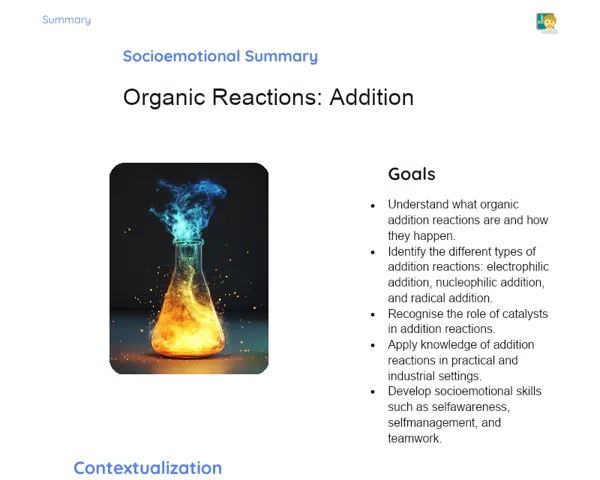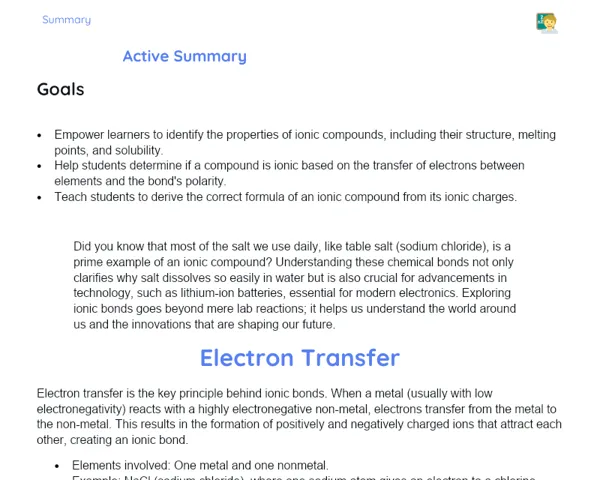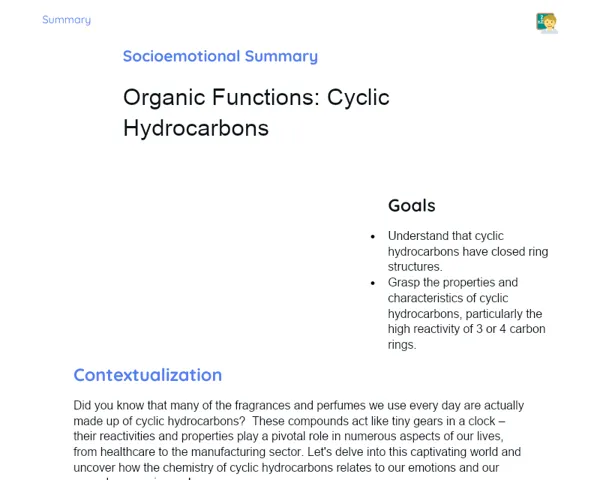Goals
1. Grasp the concept of enthalpy and how it relates to heat exchange under constant pressure.
2. Identify the main types of enthalpy and their associated values.
3. Ascertain whether a reaction is exothermic or endothermic.
Contextualization
Thermochemistry is a fascinating branch of chemistry focused on heat transfer during chemical reactions. The idea of enthalpy is crucial for grasping these exchanges, enabling us to calculate the energy involved in processes like combustion, neutralization, and even biological functions. Understanding energy release or absorption equips us to develop more efficient and sustainable technologies, including biofuels and heating systems. In the chemical sector, knowing if a reaction emits or absorbs heat is vital for ensuring process efficiency and safety. Furthermore, in industries like steel and cement production, regulating enthalpy is key for optimising energy use, cutting costs, and reducing environmental footprints. Research labs also utilise enthalpy to explore exothermic and endothermic reactions, which are essential for groundbreaking technological advancements.
Subject Relevance
To Remember!
The Concept of Enthalpy
Enthalpy (H) is a thermodynamic measure that represents the entire energy of a system, covering both internal energy and the energy related to work done during expansion at constant pressure. It's an essential metric for assessing heat exchanges in chemical reactions.
-
Enthalpy is a state function, signifying it only depends on the system's initial and final states, not the steps taken.
-
The change in enthalpy (ΔH) reveals whether a reaction is exothermic (releases heat) or endothermic (absorbs heat).
-
Enthalpy is quantified in energy units, such as joules (J) or calories (cal).
Types of Enthalpy
Various types of enthalpy relate to specific chemical reactions. Examples include formation enthalpy, combustion enthalpy, and neutralization enthalpy, each providing insights into the energy dynamics of different processes.
-
Formation Enthalpy: The energy needed to create 1 mole of a substance from its elements in their standard state.
-
Combustion Enthalpy: The energy released when 1 mole of a substance completely combusts in oxygen.
-
Neutralization Enthalpy: The energy released when an acid reacts with a base to yield water and salt.
Exothermic and Endothermic Reactions
Chemical reactions can be classified into exothermic or endothermic based on the heat transfer occurring during the reaction. Exothermic reactions emit heat into the surroundings, whilst endothermic reactions siphon heat from the environment.
-
Exothermic Reactions: These have a negative ΔH, indicating heat has been released from the system. Common examples are the burning of fuels.
-
Endothermic Reactions: These exhibit a positive ΔH, signifying heat absorption from the environment. A typical example is salt dissolving in water.
-
Identification: Surrounding temperatures rise during exothermic reactions and fall during endothermic ones.
Practical Applications
-
In the pharmaceutical industry, enthalpy is crucial for ensuring reactions are performed efficiently and safely during drug production.
-
In processes like cement manufacturing, managing enthalpy is significant to optimise energy use, curtail costs, and lessen environmental impacts.
-
Biofuels development leverages the concept of enthalpy to enhance energy efficiency and sustainability in combustion.
Key Terms
-
Enthalpy (H): The total energy in a system, encompassing internal energy and work done during expansion at constant pressure.
-
Formation Enthalpy: The energy needed to form 1 mole of a substance from its elements in their standard state.
-
Combustion Enthalpy: The energy released from the complete combustion of 1 mole of a substance in oxygen.
-
Neutralization Enthalpy: The energy released when an acid and a base react to create water and salt.
-
Exothermic Reaction: A reaction releasing heat to the environment (ΔH negative).
-
Endothermic Reaction: A reaction absorbing heat from the environment (ΔH positive).
Questions for Reflections
-
How can controlling enthalpy enhance energy efficiency in industrial settings?
-
Why is it vital to understand exothermic and endothermic reactions when shaping new technologies?
-
In what ways can knowledge of enthalpy drive sustainability and technological advancements?
Validating Enthalpy with Real Reactions
In this mini-challenge, you will put the concepts of enthalpy learned in class into action by analysing a real chemical reaction to determine if it’s exothermic or endothermic.
Instructions
-
Select a straightforward chemical reaction to conduct at home or in the lab, such as dissolving baking soda in vinegar.
-
Utilise a thermometer to take the initial temperature of the reactants before proceeding with the reaction.
-
Combine the reactants and monitor the reaction closely, noting any temperature changes observed.
-
Evaluate whether the reaction is exothermic (emits heat) or endothermic (absorbs heat) based on the temperature changes you've noted.
-
Compose a brief report detailing the experiment, the results observed, and the conclusion regarding the type of reaction experienced.



